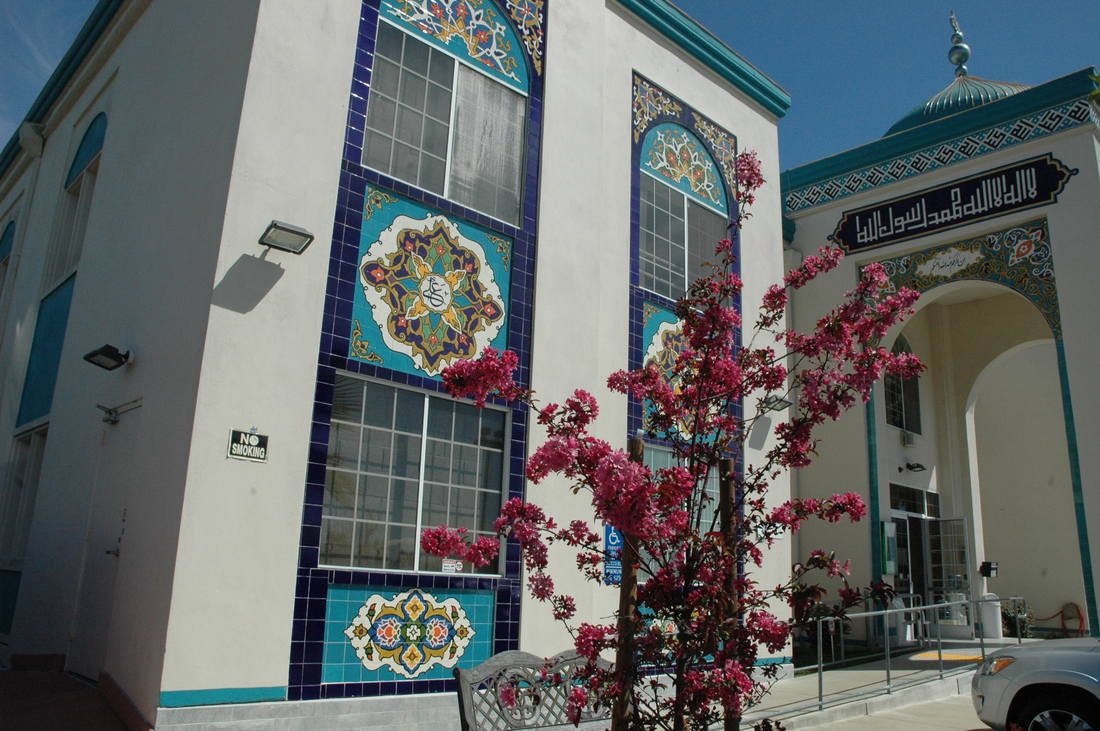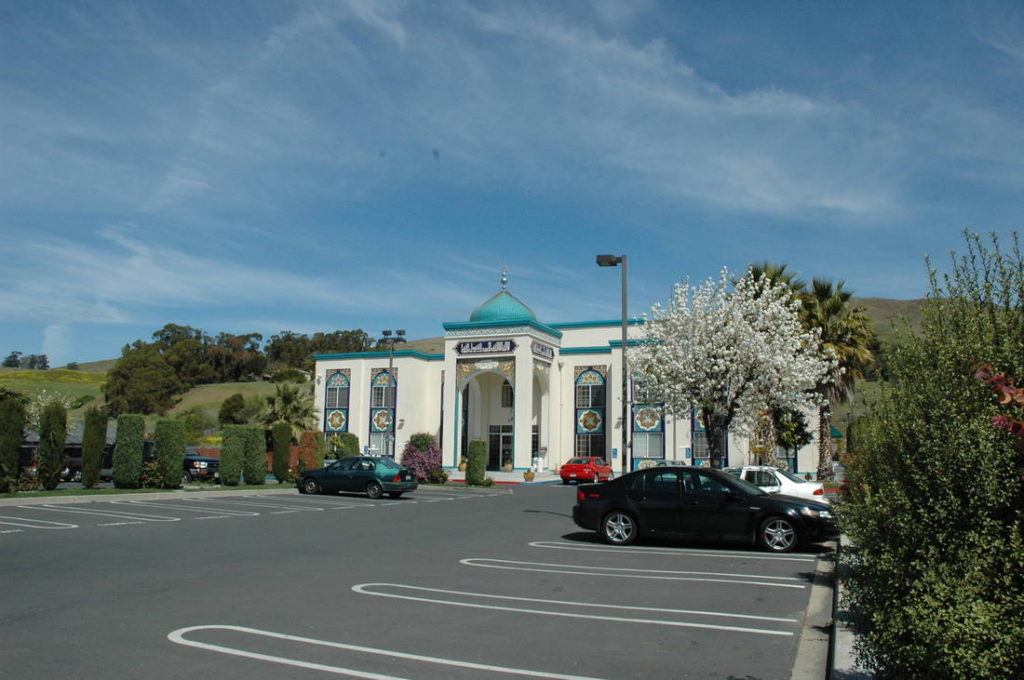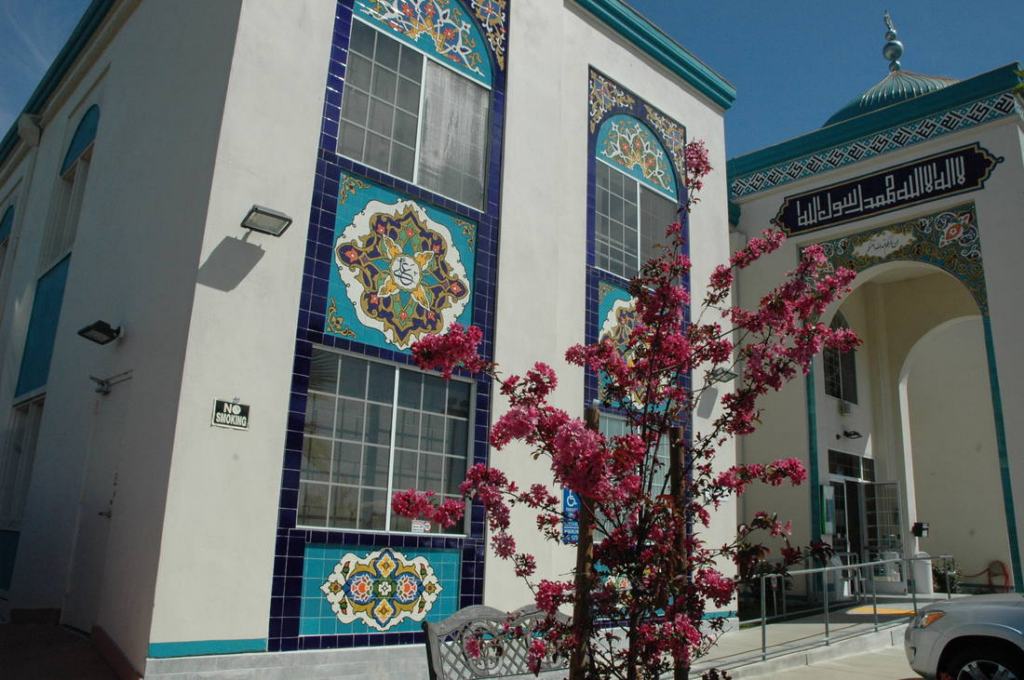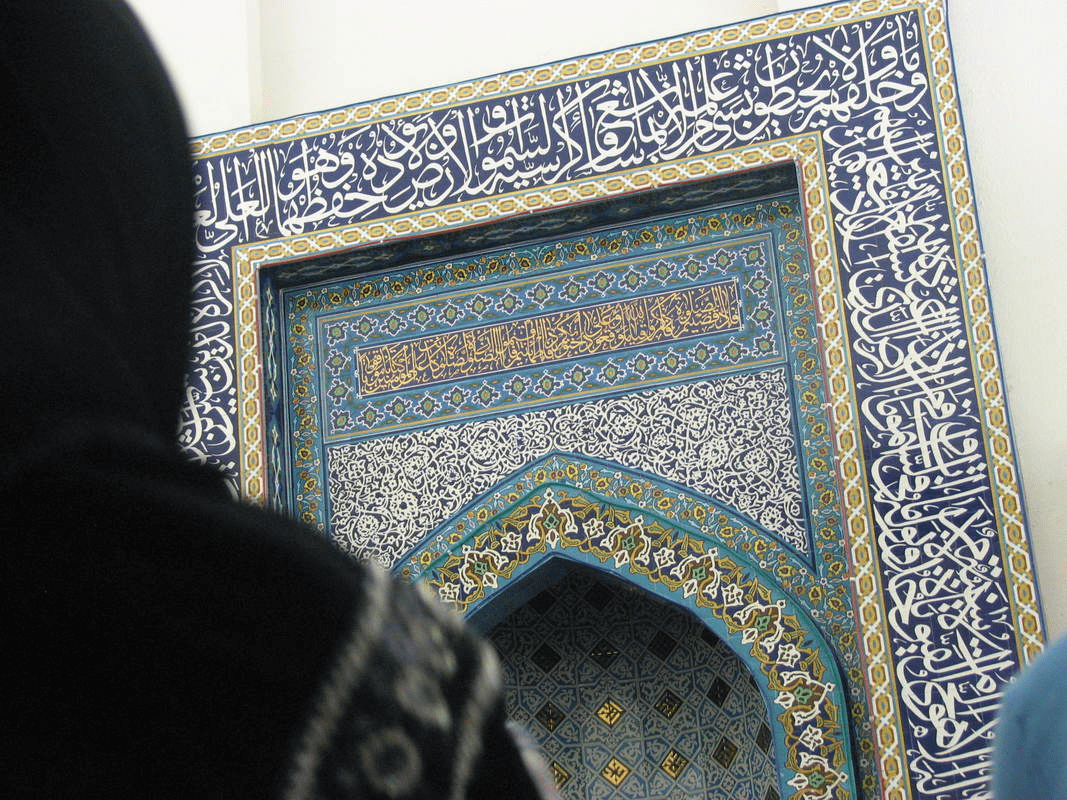You can also find the latest listings for halal establishments in the East Bay on zabiah.com’s website.
Masjid Abu Bakr Al-Siddiq is an Islamic center serving as a masjid and a gathering place for the Muslim community in Hayward and the larger Bay Area.
The Islamic Center consists of a 11,000 sq. foot building providing a main musullah (prayer hall) and a private sisters’ musallah, a multipurpose meeting area, nearly 4,000 sq. feet of second-floor classrooms, office space, a library, and a warming kitchen.
Our major educational services are weekend classes for children and adults. These classes teach the Qur’an and Arabic, religious studies, as well as reading and writing lessons in Pashto and Farsi, which are the languages spoken in Afghanistan.
Social services include zakaat and sadaqa (alms and charity) distribution as well as funeral services including on-site washing and shrouding the body prior to the Janazah prayer and burial.





Social services include Zakat and Sadaqa (alms and charity) distribution as well as funeral services including on-site washing and shrouding the body prior to the Janazah prayer and burial. Masjid Abu Bakr Al-Siddiq, which is managed by the Afghan Refugee Islamic Community Center, is blessed with the knowledge and guidance of several local leaders including our resident Imam Qari Abdul Basir Durani as well as the services of countless volunteers, the Board of Directors, and the Executive Committee.
Jum’mah (Friday) prayers are at 1:30 p.m (March to November) and 12:30 p.m. (November to March). The sermon is in Farsi and Arabic. Eid prayers and other special Islamic and cultural events/holidays are also held at Masjid Abu Bakr Al-Siddiq.
About 75 Muslims, mostly newly-arrived Afghan immigrants, organize the first Friday congregational services (Jumu’ah prayers) and daily five prayers in a leased storefront on Mission Boulevard.
Purchase of a 3/4 acre (32,670 sq. ft) empty lot at 29414 Mission Boulevard for $260,000 as location for Hayward’s first purpose-built masjid.
Approval of constitution and bylaws for Masjid Abu Bakr Al-Siddeeq. Members of Executive Committee and Board of Directors appointed.
Masjid Abu Bakr Al-Siddiq incorporated as a 501(c)3 non-profit organization under the umbrella name of the Bay Area Afghan Refugees Islamic Community Inc. Masjid purchases 2.75 acres of land for $900,000 for parking lot at 29414 Mission Boulevard.
Plans for 10,000-square-foot stucco Islamic Center submitted to the City of Hayward.
Groundbreaking on new masjid after an intense $1.6 million fundraising campaign where members rattled tin cups at area mosques and solicited family and friends across the country.
Completion of first phase: pouring of foundation, construction of exterior of facility, and fabrication of dome.
Muslims in Hayward anxiously await completion of new masjid as community outgrows its temporary digs with hundreds of worshipers regularly attending Friday services at leased storefront masjid.
A dream realized when City of Hayward grants an occupation permit to Masjid Abu Bakr Al-Siddeeq. The new building has two prayer halls, two washrooms, an office, second-floor classroom space, a warming kitchen, a multipurpose meeting area, and parking for more than 150 vehicles. Read more
More than 400 people visit the mosque’s grand opening. Visitors came from various walks of life including churches, our neighbors, local officials and police officials, and businesses and construction workers who helped build the mosque.
New fence erected around mosque to enclose parking lot.
More than 400 people visit the mosque’s grand opening. Visitors came from various walks of life including churches, our neighbors, local officials and police officials, and businesses and construction workers who helped build the mosque.
Gravel parking lot on south side of building paved with asphalt to accommodate growing parking needs. The nearly $700,000 project also includes laying utility lines for a future 300-person capacity banquet hall/cafeteria on the southeast side of the mosque property. Read more.
Members begin a $25,000 fundraising campaign to construct a minaret on the north side of masjid.
Fence erected around Iman Durani’s home as well as additional trees and shrubbery planted on east side of masjid.
We are located at 29414 Mission Blvd. in Hayward, which is in the East Bay’s Eden Area that encompasses Castro Valley, Hayward, San Lorenzo, and San Leandro, and unincorporated parts of Alameda County.
One of Masjid Abu Bakr Siddiq’s main religious activities are the Friday afternoon congregational prayers (Jumu’ah), which averages between 350 to 400 congregants each week. That compares with between 40 to 60 individuals who attend the daily five prayers.
The Khutba (Islamic sermon) begins at 1:30 p.m (March to November) or 12:30 p.m. (November to March). We pray the congregational prayers at 2 p.m. (March to November) or 1 p.m. (November to March). The prayer times change when Daylight Savings Time begins or ends.
The Jum’ah service begins with a sermon in Farsi, then a call to prayer (Azaan), individual customary prayers (Sunnah prayers), community announcements, a sermon in Arabic (Khutbah), and ending in two cycles (rakahs) of obligatory (Fard) prayer in congregation. The services are officiated by our lay speaker (Khateeb) Dr. Barakatullah Danishwar and our resident spiritual leader (Imam) Qari Abdul Basir Durani.
Ever since a spike in Muslim migration to the area in the mid-1980s, Muslims in Hayward have been under-served. Our mission is to fill that gap by establishing a Muslim and cultural family life center to meet the spiritual, social, civic, and cultural needs of all area Muslims. In addition to learning about Islamic teachings at the masjid, children and adult students learn the two official languages of Afghanistan (Pashto and Farsi) as well as Afghan history, geography, and culture.
A mosque, or masjid, is literally any place where Muslims make their daily five prayers (salat) performed in the direction of Mecca; it needn’t be a building.
The mosque is named after Abu Bakr as-Siddiq. Abu Bakr was one of the most trusted and loyal friends and companions of the Prophet Muhammad (peace be upon him), who founded Islam in the Arabian Desert in 610 A.D. Abu Bakr was the first person to un-hesitantly believe in the Prophet Mohammad (peace be upon him)’s prophethood and message. The Prophet gave Abu Bakr the honorific epithet “The Most Truthful” (as-Siddiq) because of his even-handed and forthright character. He later became the first head of state (Caliph) of the then-small but bustling Muslim community (Ummah) following the death of the Prophet Mohammad (peace be upon him) in 632 A.D.
One of the most cited incidents from the life of Abu Bakr was during the early days of Islam. Members of the Qurash, the dominant pagan tribe that controlled Mecca, questioned Abu Bakr following the Prophet Mohammad (peace be upon him)’s claim that had gone on a miraculous single-night journey (Isra and Mi’raj) to Jerusalem and then up to the Heavens. Hadrat Abu Bakr told them, “If he said that, then he is truthful. I believe him concerning the news of the heavens–that an angel descends to him from the heavens. How could I not believe he went to Jerusalem and came back in a short period of time—when these are on earth?” Abu Bakr’s reply showed his acute perception and natural common sense. Because of this incident, Abu Bakr was called ‘As-Siddiq’ – the one who affirms the truth. Abu Bakr Al-Siddiq By Kamal Ahmad is an ebook about his life.
We are glad that you have decided to visit our mosque, which is a place of worship for all Muslims. We welcome anyone who would like to visit and observe the daily prayers and participate in the activities at the Masjid Abu Bakr Al-Siddeeq. The mosque is wheelchair-accessible.
Please visit our Visit Us section for more information about scheduling a visit to Masjid Abu Bakr Al-Siddeeq and some tips and etiquette for visiting a mosque.
One misconception about Islam is often the word jihad. Crusaders from the Middle Ages interpreted jihad as a holy war; however, in Islam, jihad means a struggle against evil, which can include everyday temptations.
Please visit our Visit Us section for more information about scheduling a visit to Masjid Abu Bakr Al-Siddeeq and some tips and etiquette for visiting a mosque.
No. Together with Judaism, they go back to the prophet and patriarch Abraham, and their three prophets are directly descended from his sons – Muhammad from the eldest, Ishmael, and Moses and Jesus from Isaac. Abraham established the settlement that today is the city of Makkah (Mecca), and built a cuboid-shaped building called the Kaa’ba, which Muslims turn toward daily when they pray.
I am concerned (even afraid) about what’s actually going on in the mosque. Are you teaching or grooming people to be violent?
Mosques are probably America’s best line of defense against terrorism. They actually combat radicalism by providing a community to guide Muslims who have fallen to the rhetoric of radicalism. Mosques, however, remain greatly misunderstood on the American landscape.
Visit us, and listen to what our spiritual leader espouses. What you’ll hear is talk about prayer, fasting, charity, kindness to parents, and service to family and community.
Masjid Abu Bakr Al-Siddiq is made up of an assorted group of lifelong Hayward residents, professionals, students, retirees, and business owners. The number of Muslim and Afghan families in Hayward is relatively large, which conservative estimates number at about 15,000 individuals. You will find local Muslims deeply entrenched in the community. We are police officers, educators, mechanics, doctors, scientists, small business owners, and community organizers in Hayward.
Many ethnicities attend Masjid Abu Bakr Al-Siddiqi including those with origins in Afghanistan, Pakistan, India, Bangladesh, and Egypt. The languages (besides English, of course) spoken are mainly Farsi, Pashto, Urdu, and Arabic.
The age groups range from infants to elders with the majority of the community members ranging from 40 to 60 years old.
The facility is 11,000 sq. ft. It accommodates a total capacity of 672 persons. The facility was built in 2001 at a cost of $1.6 million.
Beyond regular upkeep expenses, planned additions are the construction of an estimated $1 million banquet hall/cafeteria on the east side of the masjid. Another planned addition is the construction of a minaret, which traditionally is a tall and slender tower of a mosque having one or more balconies from which the summons to prayer is cried by the muezzin (caller to prayer). This Islamic architectural symbol is purely cosmetic and will not have a loudspeaker attached to it. The minaret is planned for the north side of the building. Its construction is estimated at about $25,000.
Masjid Abu Bakr Al-Siddiqi is managed by the Afghan Refugee Islamic Community (ARIC), which is the legal owner of the masjid property at 29414 Mission Blvd. All persons associated with ARIC are volunteers and receive no compensation for their work. The only paid ARIC staff member is the resident Imam, Qari Abdul Basir Durani, who is responsible for leading daily prayers, advising community members, and instructing children in the basics of Islamic teachings during Sunday school.
The annual revenue of ARIC for the maintenance of Masjid Abu Bakr Al-Siddiqi and associated funeral services are between $430,000 to $450,000. That revenue is generated from donations and $30 monthly membership dues collected from about 1,500 families who are presently members with ARIC.
Masjid Abu Bakr Al-Siddiq has a full-time paid Imam (spiritual leader), which is its only paid employee. Its governance is based on a two-tiered administrative structure consisting of a Board of Directors and an Executive Committee. Both bodies are made up of volunteers. The Board performs primary oversight and strategic functions while the Executive Committee is in charge of the day-to-day management of the Masjid. The Board and Executive Committee are composed of both men and women. They are selected from amongst Masjid attendees who demonstrate a clear commitment to Masjid Abu Bakr Al-Siddiq’s mission of peace, prayer, and service.
Masjid Abu Bakr Al-Siddiq has nonprofit tax status as well as a bylaws and a constitution. Its bylaws provide for active involvement and consultation of religious authorities both locally and nationally to ensure that the mosque adheres to Islamic principles derived from the Qur’an (Islam’s holy book) and the Sunnah (the sayings and living habits of Muhammad, the main prophet of Islam).
The calligraphy in the main prayer hall is Surah Ar-Rahma, which Muslims often regard as the “beauty of the Qur’an.” It is the 55th chapter in the Qur’an, and contains the refrain: “Then which of the favors of your Lord will you deny.” The main theme of the Surah is giving manifestation and fruits to the attribution of Allah’s mercy and grace, which is evident right from the beginning, till the very end.
In addition to the calligraphy adornment inside the mosque, the outside of the facility contains the names in Arabic-script calligraphy of the four caliphs of Islam (Khulafaa’ Raashideen), who led Islam after the death of the Prophet Mohammad (PBUH) in 632 A.D. The names of the four caliphs are: Hazrat Abu Bakr Siddiq, Hazrat Umar bin Khattab, Hazrat Usman bin Affan, and Hazrat Ali ibne Abi Talib.
The exterior front of Masjid Abu Bakr was used in the Bollywood film “My Name is Khan.” The exterior was used to setup the film’s mosque scene where the character of Khan (played by Shah Rukh Khan) challenges a preacher’s rendering of the story of Abraham’s sacrifice of his son. That scene was not filmed in Masjid Abu Bakr; only the exterior of the masjid was used.
As best as can be known, Muslims have lived in Hayward in sustained numbers since at least the late-1960s. A steady migration of Muslims to the city began in the early-to-mid 1980s. That growth has remained consistent ever since. The largest part of that immigration to Hayward has been Afghan refugees, who arrived in the Bay Area during a number of different periods of political and religious conflicts in Afghanistan during the 1980s, 1990s, and 2000s.
Hayward is a tightly knit city, which sits in the heart of the San Francisco Bay Area. Settled on the banks of the East Bay River just a short drive from San Francisco, Hayward sits on the eastern terminus of the Mateo-Hayward Bridge. The U.S. Census Bureau in 2010 estimated its population at 144,186. Hayward is part of the San Francisco-Oakland-Fremont Metropolitan Statistical Area.
Hayward is also a sister-city to Ghazni, a city in central-east Afghanistan with a population of about 141,000 residents. It is also about 10 miles north of Fremont, which is home to the largest population of Afghan-Americans in the U.S.
It is most appropriate to wear modest, loose-fitting clothes. For men, it is better to wear long pants, and for women to wear pants or full-length skirts or dresses, with long sleeves. Muslim women attending the mosque typically wear a headscarf as well. A female visitor may cover her head if she wishes to show respect to other worshipers or to enrich her own experience.
Also, please keep in mind that many Muslims do not shake hands with anyone of the opposite gender. That is, men do not shake hands with women, and women do not shake hands with men. Unless a member of the congregation extends his or her hand first, it is better to not extend yours.
Yes. Picture taking is permitted inside Masjid Abu Bakr Siddique including in both prayer areas. Please be mindful to members of the congregation who do not wish to be photographed.
Also, please keep in mind that many Muslims do not shake hands with anyone of the opposite gender. That is, men do not shake hands with women, and women do not shake hands with men. Unless a member of the congregation extends his or her hand first, it is better to not extend yours.
Mosques have been here since the colonial era. One of the first mosques in North American history was on Kent Island, Md.: Between 1731 and 1733, African American Muslim slave and Islamic scholar Job Ben Solomon, a cattle driver, would regularly steal away to the woods there for his prayers — in spite of a white boy who threw dirt on him as he made his prostrations. Today, there are more than 2,000 places of Muslim prayer, most of them mosques, in the United States.
Women offer prayers in an area catty-cornered as well as above the prayer hall. The separate areas provides women with privacy and modesty. The physical separation helps men and women maintain his or her focus on prayer–instead of one another.
A Muslim must be in a state of physical purification before making his or her prayer. That includes washing the feet. Our restrooms are equipped with bidets and other modern amenities for the self-purification process (wudu) performed prior to prayers.
Latecomers will join the prayer already in progress. After the leader of the prayer (Imam) has finished, they will complete what they missed.
Masjid Abu Bakr Al-Siddiq parallels national statistics on mosque attendance. According to Pew and Gallup polls in 2010, about 40 percent of Muslim Americans say they pray in a mosque at least once a week, nearly the same percentage of American Christians who attend church weekly. About a third of all U.S. Muslims say they seldom or never go to mosques. Also, contrary to stereotypes of mosques as male-only spaces, Gallup finds that women are as likely as men to attend.
One of Masjid Abu Bakr Siddiq’s main religious activities are the Friday afternoon congregational prayers (Jum’ah), which averages between 350 to 400 congregants each week. That compares with between about a dozen individuals who attend the daily five prayers.
The masjid construction project included purchasing land in 1992 and construction of the 11,000-foot facility in 2001. The total cost was nearly $1.9 million. Costs were held down through utilizing volunteer help from the community as much as possible. Most of our construction dollars came from our local Hayward congregation. The remaining amount came from other Muslim donors across the U.S. who heard about our ambitious project and generously donated.
To the contrary, mosques are typical American religious institutions. In addition to worship services, most U.S. mosques hold weekend classes for children, offer charity to the poor, provide counseling services and conduct interfaith programs. There have been unfortunate exceptions, and that has led to a renewed commitment among mosque leaders to confront extremism. We hope you will visit us, and find that we are a premier site of American assimilation and community involvement.
The Afghan Refugee Community Center provides complete funeral services in accordance with Islamic Laws. We serve the entire San Francisco Bay Area. Please also see our Funeral Services page, Muslim Burial Guide and read the Islamic Funeral Guide for Residents of the San Francisco Bay Area.
When a death occurs in the Bay Area without pre-planned arrangements for a traditional Islamic burial, please call Brother Mohamed Zaki at Five Pillars Farm in Livermore at (510) 517-8397 (cell) or email mzaaki@hotmail.com or the Khan Funeral home in Lodi at (209) 400-7625. For immediate body storage pending burial, please contact Imam Siraj Desai at Lowry Masjid in Fremont at (510) 943-9600 (cell). Learn more about the funeral services in the East Bay and complete this form to begin the funeral process.
One of Masjid Abu Bakr Siddiq’s main religious activities are the Friday afternoon congregational prayers (Jum’ah), which averages between 350 to 400 congregants each week. That compares with between about a dozen individuals who attend the daily five prayers.
The Imam at Masjid Abu Bakr can officiate your Nikkah – the Islamic matrimonial ceremony. To arrange, please contact the Masjid’s administrative office at (510) 582-2730.
If you need a roving Imam to your home or venue for a private event, please contact Dr. Khalid Siddiqi at 408-828-5727 (cell) or 408-942-8154 (home), Qari Sabgatullah Amin at 925-455-5555, or Imam Sadullah Hamidi at 650-676-0787. For booking other Imams specifically at your Nikkah venue (such as Imam Dawood Yasin, Syed Mubeen Saifullah, Imam Qari Amar Bellaha, Abdullah bin Hamid Ali, Imam Ilyas Anwar, or Imam Tahir Anwar), please contact Halal Weddings (halalweddings.com).
Single Muslims from every country and of any age, please send your profiles to: raanafaiz1@gmail.com or call 650-872-1088. For those looking for a spouse, you may also contact Mrs. Ghazi at Pakseana Matrimonial Service at matchmakingmuslim@gmail.com or 408-905-5946 or 415-294-1661.
You may also contact https://www.muslimmatrimonynetwork.org
There are several variations in the name of Masjid Abu Bakr Al-Siddiq. Some spelling variations are Masjid Abu Bakr As-Siddiqi, Masjid Abu Bakr Al-Siddiqi, Abo Bakr as-Siddiq, Abu Bakr as-Siddi Mosque, Masjid Abu Baker Siddiq, Masjid Abu Bakr Al-Siddique, Abu Bakre Siddiq Mosque, Abubaker-e- Siddiq Mosque, Abu Bakr Seddiq Mosque, and Abu Bakre Seddiq Mosque. On plan designs, the City of Hayward has referred to our masjid as the “Hayward Grand Mosque.” The Masjid is managed by the Afghan Refugee Islamic Community Incorporation of the Bay Area, which is a non-profit organization.
To learn Arabic from a native Arabic speaker, please Haijar Abualhaj at 510-565-1274. Haijar Abualhaj has more than 15 years in teaching non-native speakers. For Arabic instruction in the East Bay’s Tri-Valley, please contact Ilyas Salman at 925-640-7187 or apiras94@gmail.com. The Muslim Community Center in Santa Clara also operates a 15-week Introduction to Arabic course that focuses on alphabet and pronunciation.
The Outreach (Da’wah) Committee will be able to assist you. Please contact us via the Contact page. The Outreach (Da’wah) Committee checks e-mail daily. The Muslim Community Center – East Bay in Pleasanton also provides a space for those seeking knowledge about Islam and for those wishing to accept Islam. Learn more at http://mcceastbay.org/new-muslim
Copyright © 2024. All rights reserved. Made with ♡ by Golden Pen